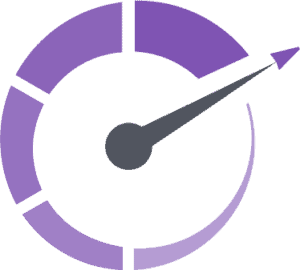In this beginner guide will go over how to start your own blog, blog hosting, choosing a WordPress theme for your new blog, building content for your blog article that search engines will love, how you can start making money blogging, digital tools for blogging and much, much more!
Affiliate-Disclosure: DWB™ is reader-supported. We may earn a commission, at no additional cost to you.
We've chosen the WordPress blogging platform as it is the perfect platform for bloggers of all levels of experience to begin their blogging journey. Compared to other blogging platforms, WordPress is head and shoulders above.
After reading this article, you'll learn the following:
- 1Why you should start a blog
- 2How to choose a blog niche
- 3How to choose a web host for your blog
- 4How to choose the perfect domain for Your-Digital-Business™
- 5How to start your blogging journey by installing WordPress
- 6How to choose a suitable theme for your new blog
- 7How to install plugins for your new blog
- 8How to build content for your blog
- 9How to begin promoting your new blog
So what are we waiting for?
Let's start a blog!
In just a few minutes...
Why Build a Blog?
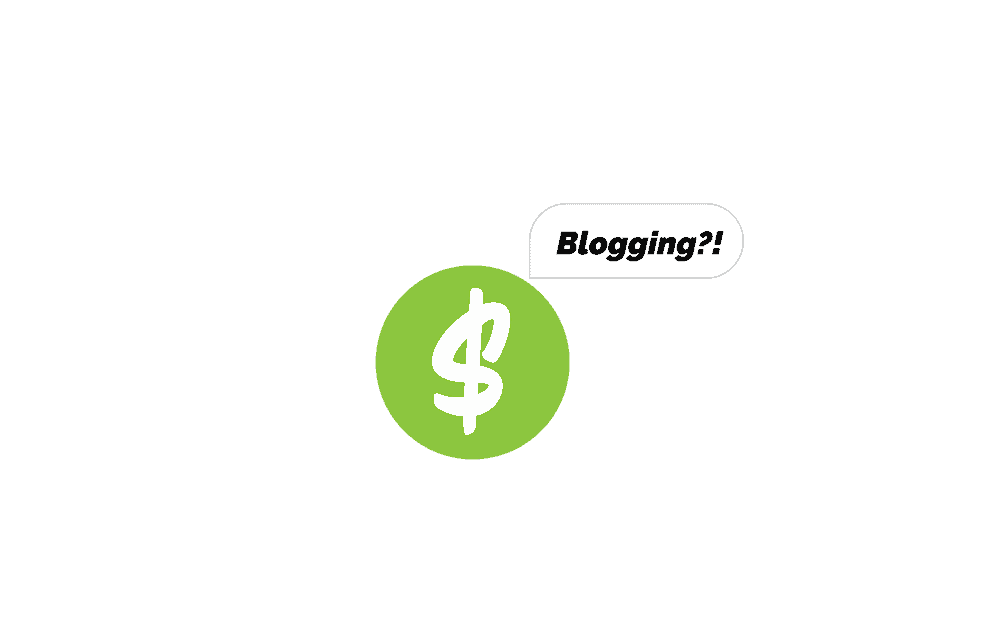
Starting a blog is an excellent way to build an audience and make money from your hard work.
There are numerous reasons to start blogging, but here are just a few:
Wealthy's-Favorite blogging tools are Bluehost, Jasper, PartnerStack, ShortPixel, Sucuri, & Surfer SEO.
Wealthy's-Favorite/
Blog-Setup
Here is Wealthy's Favorite blog setup for beginners (Lowest Cost/Best Features):
- 1Sign up for Bluehost's Choice Plus Plan (<--Discount Link)
- 2Enter the domain for Your-Digital-Business™
- 3Enter your account information
- 4Double-check that the Package Information is correct
- 5Remove the Privacy Protection extras (Optional)
- 6Enter your Payment Information & complete your purchase
- 7Choose your password and log into your new Bluehost account
- 8Answer the onboarding questions (Optional)
- 9Skip the "Choose a Theme" step, as we'll get to the later on
- 10From the Bluehost dashboard, click "My Sites" and Log into WordPress
Wealthy's-Favorite blogging tools are Bluehost, Jasper, PartnerStack, ShortPixel, Sucuri, & Surfer SEO.
How to Build a Blog
1 Choose a Niche
Choosing the right niche is an essential part of your blogging journey, as it will determine what kind of audience you attract, how successful your blog becomes, and how you make money blogging.
I'm sure you've seen these circles before...
These are great for illustration purposes but (at least in our case) not all that practical.
We need to use a different set of criteria when it comes to choosing a successful niche for your WordPress blog:
- 1Authority
- 2Marketing
- 3Audience
- 4Keywords
Starting a blog begins with choosing the right niche that blends well with these four criteria.
Wealthy-Tip:
When brainstorming your blog's niche, try and brainstorm blog topics with no restrictions on your personal or professional interests. Mind-mapping tools like MindMeister can aid in this process.
1 Authority

When starting a blogging business (or any business, for that matter), authority is vital.
And while digital businesses may require a different skill set than traditional businesses, the fundamentals are still the same, and you need to know your industry.
That's why it's always best to stick with what you know.
If you're already knowledgeable about the ins and outs of your chosen industry, you'll have a leg up on the competition.
Not only will you be able to make informed decisions about your business venture, but you'll also be able to serve your target market better.
In short, knowing your industry is an essential skill when starting a blogging business.
However...
You can start a blog or make money blogging in another niche where you have less experience.
It's just going to take more work on your part to cover the gaps in your knowledge of that niche.
2 Marketing
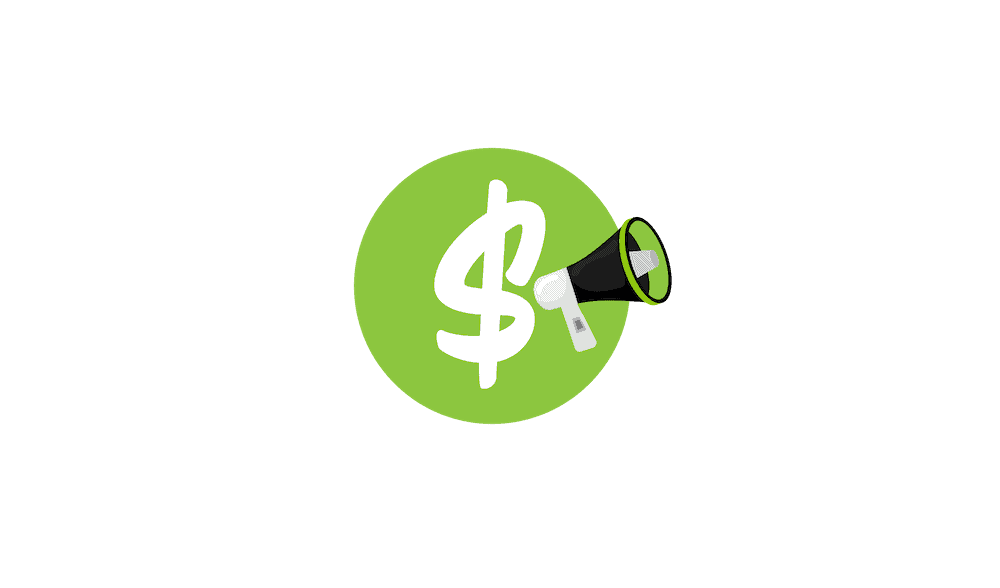
It's a well-known fact that to generate revenue, you need to make sales.
But many people need to realize that their industry needs profitable products to promote to their customers to generate decent revenue.
There's no use in promoting products that no one will buy. So, be sure that the niche you choose has plenty of products with a high potential for sales.
Otherwise, you'll just be spinning your wheels and wasting your time.
Enter Stage (Left): Affiliate Marketing

Affiliate marketing is one of the most popular forms of blog monetization because it offers a lot of potential for bloggers.
With affiliate marketing, you are recommending products and services of other businesses and making a commission on every sale.
This is a great way to earn a passive income because you don't have to do most of the selling yourself.
All you need to do is promote quality products and services to your readers. If they purchase through your affiliate link, you'll earn a commission.
This is a massive factor in why we love affiliate marketing. There's so much potential to make good money with this method. And once you get started, it's pretty easy to maintain.
All you need to do is continue promoting the products and services on your blog and making sure your readers are happy with their purchases.
If they are, they'll keep returning for more, and you'll continue earning commissions.
More on affiliate marketing later...
3 Audience

Once you've identified a niche with both authority and marketing potential, it's time to determine its audience.
You want to identify products and services that your audience is willing to spend money on, ensuring that you're recommending things they are willing and able to pay for.
Researching their preferences, needs, and wants will help ensure that you choose the right niche for your blog and provide valuable insights about which products and services may have good potential for sales.
The trick here is to find a happy medium between what people are willing to pay and what it's worth for you as a blogger.
For example, if there's a product that has the potential to be incredibly lucrative, but only pays out $1 per sale, then it might not be worth your time.
On the other hand, if a product pays out $100 per sale (and your audience is willing and able to pay), this could be an incredibly profitable venture for you.
By doing this, you'll be more likely to make a decent return on the investments of time and money you put into your blog.
Once you understand who your audience is, what they need, and what they're willing/need to buy to solve their problems, you are on the home stretch.
Understanding your audience is a priceless investment in starting a blogging business.
4 Keywords
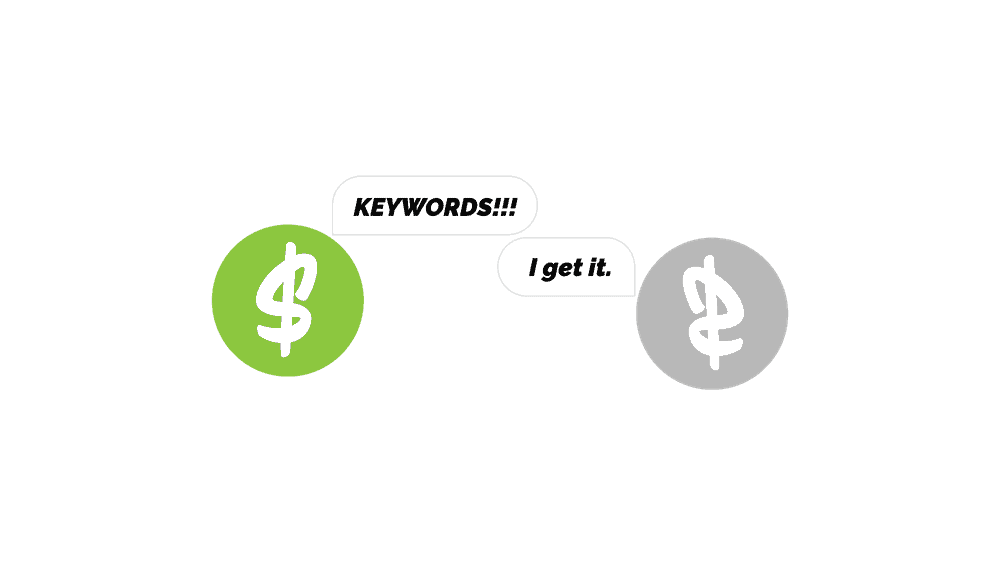
I can't stress enough how important keywords are to make money blogging.
Keyword research can make or break you.
Keywords are phrases or words people type into search engines for information about a topic.
Keyword example:
- "How to start a blog"
- "Start a blog"
- "Starting a blog"
- "How to start a blogging business"
These are all variations of keywords one might use to search the internet to learn one thing... how to start a blog.
There are two categories of keywords:
- Short-tail
- Long-tail
Short-Tail Keywords
Short-tail keywords, generally, range from a single word to a small handful of words. (Approx. 1-4 individual words) Short-tail keywords are at the top of the list, meaning they are the most sought-after and challenging to rank for.
Short-tail keyword examples:
- Best hose
- Best software
- Best dress
- How to dance
- How to jump
- How to sleep
(Forgive me for that last one... 
From our example above, "start a blog" would also be considered a short-tail keyword.
Imagine how many sentences or phrases you can create just from "start a blog "...
I'll let you ponder that for a moment.
No, no, take your time...
Seriously, think about it.
There are near-endless possibilities.
This brings us to...
Long-Tail Keywords
Long-tail keywords are... well, longer. Long-tail keywords blur the line between a phrase and a sentence. (Approx. 4-8 individual words)
Long-tail keyword examples:
- Best hose for outdoor gardens
- Best software for small business owners
- Best dress for prom
- How to dance the night away
- How to jump over a cactus
- How to sleep like Snorlax
These are fun!
As a blogger, you want to ensure your keywords are relevant to the products and services you're promoting. By doing this, you can optimize your blog posts for search engines.
When people type keywords related to those products or services into search engines like Google, they will be more likely to find your blog post on the results page.
Additionally, keywords help readers know what your content is about. If they see keywords in titles and headlines that match their interests, they are likelier to click on them and read further.
Try using keywords related to the product or service you are selling, but also consider keywords related to the niche.
When you research and target these specific keywords within your blog posts, you increase the chances of showing up higher within the results.
The more specific and relevant the phrase, the better your chance of ranking high on search engine results pages.
When choosing keywords, try to think like your audience.
Ask yourself: "What terms would they type into a search engine?"
Better yet: "What terms would I type into a search engine?"
This will help you determine which words and phrases to target to get as much organic traffic (visitors) to your articles.
Optimizing your blog with targeted keywords increases the chances of your audience finding your blog and making a purchase (or two).
Enough about keywords for now.
KEYWORDS!!!
Sorry, I had something in my throat there... 
Let's continue.
2 Choose a Host
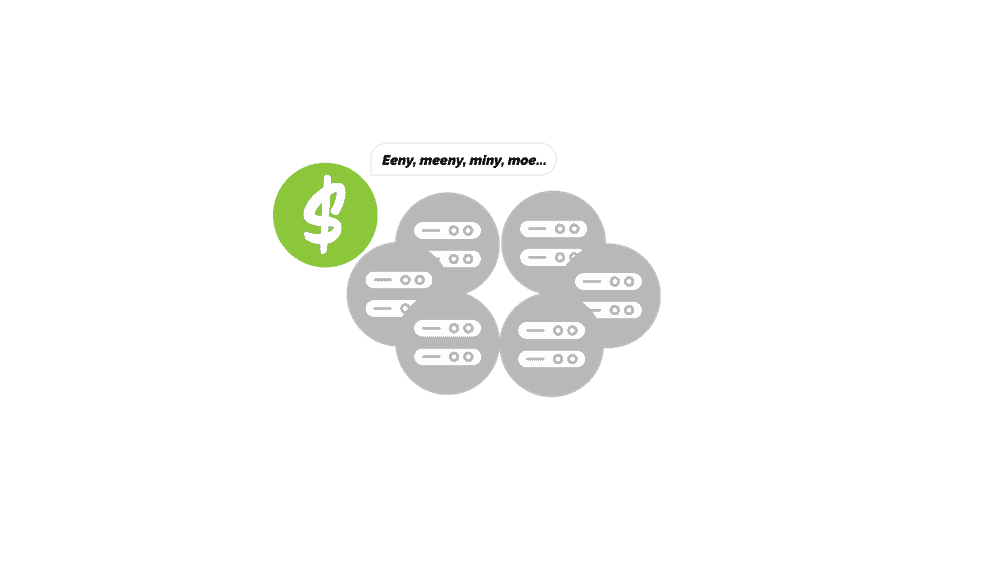
Once you have chosen your niche, you now need web hosting. This can be daunting if you are unfamiliar with the different hosting types and what each entails.
However, armed with some knowledge, you can find the perfect host for your website.
Web hosting companies provide servers to website owners for storing information for their blogging platform (cat pics, dog videos, memes, etc.) or any other content accessible via the World Wide Web.
Types of web hosting:
- Shared
- Virtual Private Server (VPS)
- Dedicated
- Cloud
- Managed
Web Hosting Illustration:
Cloud
^^^^^^
Shared < VPS < Dedicated OR Dedicated > VPS > Shared Managed
__________________________________________________________________________
That'll clear things up...
There are other, more-involved types of web hosting, but for our needs, these five are more than what's necessary to choose the right web hosting provider.
I always recommend starting with Shared Hosting from Bluehost, since it's the most cost-effective type of hosting for beginner bloggers. By the time you need anything above Shared, you'll be well aware of it.
Once your self-hosted WordPress blog starts to gain traction and make money, you can always upgrade to higher, faster, and more expensive hosting options.
Shared Hosting
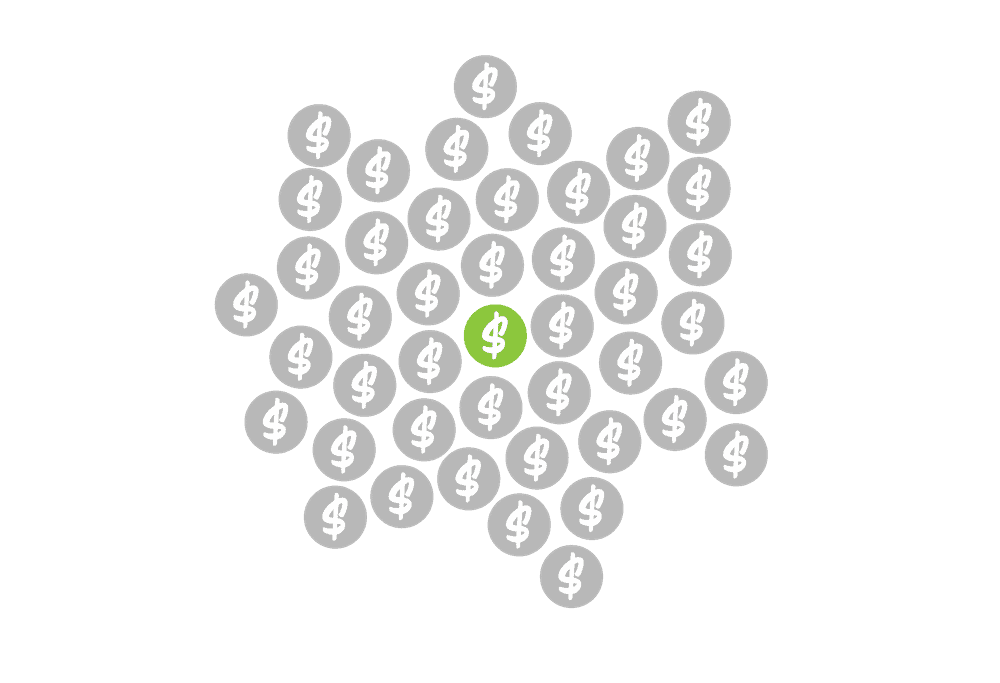
Shared hosting is one of the most popular types of web hosting, and for a good reason.
As the name implies, your website will share server resources (RAM, CPU(s), etc.) with other websites.
This is an excellent option for small businesses or websites with limited traffic.
And because you're sharing resources with other businesses, this is often more affordable than other hosting solutions.
However, shared hosting does have some downsides.
For example, if another website on your shared server gets a lot of traffic, it can also slow down your website.
And if one of the other websites on your shared server is engaged in activities that get them blacklisted (such as spamming), your website could also be affected.
However, shared hosting is an excellent option for small businesses and personal websites.
VPS Hosting
Virtual Privat Server (VPS) hosting is another option between shared and dedicated hosting and is an excellent option for websites that expect more traffic than shared hosting can provide but don't need the full power of a dedicated server.
With VPS hosting, your website will share a server with other websites but also have its own virtual space. This makes VPS hosting more expensive than shared hosting but less expensive than dedicated hosting.
VPS is useful for businesses or individuals who need some of the advantages of dedicated servers but with a more affordable price tag.
Dedicated Hosting
Dedicated hosting may allow you even more, customization and control if your website expects a lot of traffic. Your website will have dedicated resources and processing speed with a dedicated host.
A dedicated server means your website has a physical server with no other websites sharing it.
This gives you full access to all the software and hardware configurations so that you can tailor your setup to meet your needs perfectly.
You also don't have to worry about other websites impacting yours—their traffic won't slow down or affect performance in any way, which means your site will run faster and more reliably than it would on a shared hosting plan.
Dedicated hosting can be more expensive, but it is worth considering if you want better performance and control for your website.
If you're unsure whether dedicated hosting is right for you, stick with shared hosting until you know you'll need it.
There's no need to spend the monies...
Cloud Hosting

Cloud hosting can be a great option for businesses looking for a reliable and cost-effective way to store their data.
With cloud hosting, businesses can store their data on servers located in multiple geographical locations. This ensures that if one server goes down, the data will still be accessible from another.
When people discuss the "cloud," they usually refer to Distributed Virtual Private Servers (VPS). A usual VPS stores data on one computer instead of being hosted across a whole network.
The advantage here is that with more hosts in your system, you can quickly scale up resources without worrying about downtime or data loss, thanks to built-in redundancies within each host.
Additionally, cloud hosting allows businesses to scale their storage needs as they grow.
Managed Hosting

With managed hosting, you can offload the responsibility of maintaining your website to a team of experts.
They will proactively monitor your site for threats and take care of any security patches that need to be applied.
In addition, they can also help to optimize your site for performance and provide advice on how to improve your website overall.
As a result, managed hosting can provide peace of mind and allow you to focus on running your business.
Trying to keep up with the demands of a website can be overwhelming - especially if you're also trying to run a business. (Not to mention the added stress of ensuring your site is secure.)
Installing security plugins like Sucuri can make security upkeep for your entire blog particularly easy and manageable.
Security threats constantly evolve, and keeping up with the latest trends can be a demanding full-time job. That's where managed hosting comes in.
By outsourcing the management of your server to a third party, you can free up your resources to focus on other areas of your business.
In addition, managed hosting can provide you with expert support and guidance.
This can be especially helpful if you're new to hosting or need more time to manage your business.
Managed hosting can also give you peace of mind knowing that your server is being taken care of by professionals.
If you're looking for a hassle-free way to host your website or application, managed hosting may be the right fit.
Web Hosting Considerations
OK! Now that we have a little background knowledge about web hosting, we can start finding the perfect web hosting provider for your website.
When choosing the right web hosting provider for your blog, there are a few questions you should ask yourself before proceeding...
Web Hosting considerations:
- What's my budget?
- What type of hosting do I need? (Ahem!.. You know the answer to this one.)
- How long do I plan on being with this host?
- Do I need additional features, such as email or e-commerce?
Answering these questions will help you narrow down your options and make finding a web host that fits your needs more leisurely.
Once you've answered these questions, you can begin comparing different hosting plans.
Wealthy's-Favorite hosting tools are Bluehost, EasyWP, GoDaddy, & Domain.com
To help narrow down the search further, here are a few of our top picks for web hosting:
GoDaddy
GoDaddy.com is the World's leading domain registrar with 75 million+ registered domains. All shared web hosting plans come with a FREE domain name, SSL certificate, 24-Hour malware scans/removal, GoDaddy Payments, and website backup and protection with a 1-click restore.
Source: GoDaddy.com
Basic: $8.99/m
- 20 GB SSD Storage
- 2 free Microsoft 365 mailboxes ($47.76/yr value) - 1st year
Deluxe: $11.99/m
- 40 GB SSD Storage
- 1-click testing site
- 3 free Microsoft 365 mailboxes ($71.64/yr value) - 1st year
Ultimate: $18.99/m
- 60 GB SSD Storage
- 1-click testing site
- 5 free Microsoft 365 mailboxes ($119.40/yr value) - 1st year
ECommerce: $20.99/m
- 80 GB SSD Storage
- 1-click testing site
- Unlimited products
- Appointment scheduling
- Real-time shipping rates
- 5 free Microsoft 365 mailboxes ($119.40/yr value) - 1st year
Bluehost
If you're starting a blog with WordPress, this is where Bluehost comes in. Since 2005 Bluehost has been recommended by WordPress. They offer reliable hosting with multiple plans so that you can choose the best one for your budget and needs.
All shared web hosting plans come with a FREE domain name, CDN, and SSL for the first year, custom themes, and 24/7 customer support.
Source: Bluehost.com
Basic: $2.95/m
- 1 website
- 10 GB SSD Storage
Plus: $3.95/m
- Unlimited Websites
- 20 GB SSD Storage
Choice Plus: $4.45/m
- Unlimited Websites
- 40 GB SSD Storage
- FREE Domain Privacy
- FREE Automated Backup (1st year)
PRO: $9.95/m
- Unlimited Websites
- 100 GB SSD Storage
- FREE Domain Privacy
- FREE Automated Backup
- FREE Dedicated IP
EasyWP
EasyWP (Namecheap) is second only to GoDaddy, with 16 million+ registered domains. Namecheap is a low-priced, managed WordPress web hosting company for everyone looking at starting a blog, with a web hosting plan for any budget.
Source: Namecheap.com
EasyWP Starter: $14.88/y
- 10 GB SSD storage
- 50k visitors/month
EasyWP Turbo: $28.88/y
- 50 GB SSD storage
- 200k visitors/month
- 1.5x more CPU
- 1.5x more RAM
- FREE CDN & SSL
EasyWP Supersonic: $34.88/y
- 100 GB SSD storage
- 500k visitors/month
- 2x more CPU
- 2x more RAM
- 99.99% uptime guarantee
- FREE CDN & SSL
Domain.com
Domain.com is a web hosting company that offers a simple set of tools for your self-hosted WordPress blog. They make starting a blog easy, and both the WP Starter & WP Essential plans get a FREE domain for the first year.
Source: Domain.com
WP Starter: $3.75/m
- Unlimited storage
- Scalable bandwidth
- Customized control panel
- Pre-installed themes & plugins
WP Essential: $6.95/m
- WP Starter features +
- Maximized site speeds and uptime
- SiteLock professional security
- Automatic malware removal
- 24/7 Support
Here are a few more of our top hosts you should consider when starting a blog:
WPX Hosting | IONOS | Jimdo |
SITE123 | Web.com | Zyro |
Kinsta | RoseHosting | Hostinger |
3 Choose a Domain

Let's start shaping your blogging journey by choosing a custom domain name.
Having a custom domain shows visitors that you take your business seriously.
Your domain name is the address people will use to access your website's content.
Preferably, it should be short, memorable, and closely related to (if not the same as) your blog name.
Hopefully, you've got a few ideas for a blog name swirling around in your head or written down somewhere. This will make choosing your domain name easier.
If not, don't stress... It's a process, and it can take time to develop the right one.
When choosing your domain, opt for a '.COM' or '.NET' extension, as these are much more recognizable than any other extensions like 'CO.UK', '.ORG', etc.
It would be best if you always opted for a domain name that ends with (.COM)
Nowadays, it's getting harder and harder to find quality Top-Level Domains (TLDs) without paying an arm and a leg.
You might have to go with your second or third options to find one that you like and is available.
Purchasing Your Domain Name

Once you have decided on a domain name, the next step is to purchase it.
Most quality web hosting providers, such as GoDaddy, Bluehost, Namecheap, & Domain.com, also provide domain registration.
The domain registration process will be pretty straightforward - all you need to do is enter your domain details and make the Payment for your domain name.
Once you have done that, your domain name is yours!
It's important to remember that domain names are purchased for a set period.
The most popular length is one year, but you can buy them for two years or longer if needed.
It's always good to keep track of when your domain renewal date is.
Let's see what we can come up with...
Source: Bluehost.com
Sorry, Your-Digital-Business.COM is unavailable...
But... what about .NET?
Source: GoDaddy.com
Your domain is available! Let's scoop that thing up before anyone else does.
Transferring Your Domain (Optional)
In our example, we bought a domain through GoDaddy but are using Bluehost as our web host.
If you've bought your domain through the same web hosting provider, you can skip over to 4 Installl WordPress.
Most web hosting providers put a transfer lock on domains for the first 30-60 days (some longer).
Why? Cause...
All this means is that you cannot move the domain around town.
You can still point the domain to another server or host, which is what we'll have to do.
Pointing Your Domain (Optional)
To point your own domain to another server, you must change the Name Server (NS) for your chosen domain through the domain's registrar.
Following our example above, to point the domain to Bluehost, your domain's NS records need to be changed.
In GoDaddy's dashboard, find your NS records and change them from the default to:
ns1.bluehost.com
ns2.bluehost.com
Bluehost has a detailed guide on how to update your name servers.
Double-check these before you save and continue.
The entire process could take up to 72 hours to propagate. (Most of the time, it's within an hour, though.)
Now, we hurry up and wait...
Once the name servers have subtracted the zero and divided by one, we're ready to move on!
4 Install WordPress
Now that you have chosen a domain and secured blog hosting for your new blog, we're ready to set up WordPress and start a blog!
Source: WordPress.org
I spotted a typo...
It should read: WordPress: Grow Your-Digital-Business™
Source: WordPress.org
Much better!
Lucky for us, Bluehost makes WordPress installation a breeze.
From your dashboard, click "My Sites."
Then, "Create New Site"
Source: Bluehost.com
We're brought to the next page, where you'll enter Your-Digital-Business™ for the site name (You could honestly name it anything) and click "Next."
Source: Bluehost.com
Now, we have to choose Your-Digital-Business™ domain from the dropdown menu. The 'Directory' field can be left blank as this is used to point to a specific subfolder, but we're not concerned with that in this example.
Now, click "Next."
Source: Bluehost.com
After a moment or two, you will either be brought to a landing page that shows you your login credentials and asks you to log into WordPress or be redirected back to the "My Sites" tab in the Bluehost dashboard, where you should see Your-Digital-Business™ as one of the tiles.
If the former: Click "Login to WordPress" and skip ahead.
If the ladder: Find and click "Manage Site" and continue.
Source: Bluehost.com
Source: Bluehost.com
Next stop: The WordPress dashboard!

You are officially the proud new owner of a successful blog!
Apologies got ahead of myself there... I get excited sometimes.
But, for reals, let's take a moment here.
You ARE now a proud new owner of a WordPress blog and one step closer to success.
Please do me a favor: Give yourself a high five for me... from yourself.
Moving on!
Let's get you a WordPress theme to shine things up a bit.
5 Choose a Theme
The next step in starting your blog is choosing the perfect blog theme.
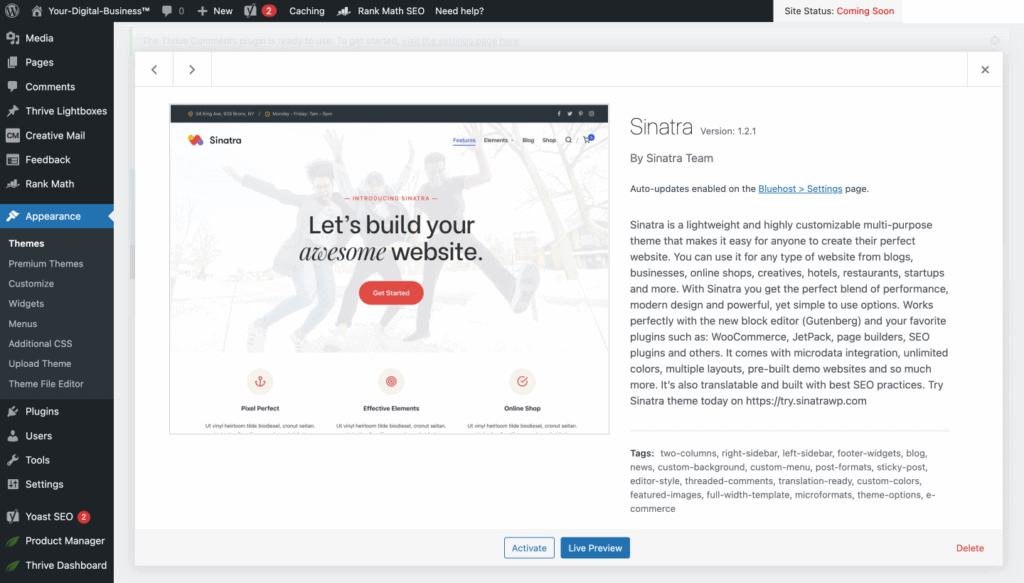
In the blogging World, a prebuilt website design is called a blog template. (AKA: Theme)
Themes determine how your blog pages and blog post look and function.
You can customize colors, fonts, header images, logos, etc.
When it comes to choosing a WordPress theme, there are a lot of factors to consider.
First, you need to decide what kind of website you're creating.
Are you building a blog, an online store, or a portfolio?
Once you know the purpose of your site, you can narrow down your theme options.
For example, if you're creating an online store, you'll want to choose a theme that includes eCommerce features.
If you need help figuring out where to start, try looking for themes designed for the type of site you're creating.
One way to do this is to think about the overall design and layout that you want for your website.
Do you want a simple blog design or something more complex?
Another important consideration is whether or not you want a free or premium theme.
Free themes are generally basic, while premium themes offer more features and customization options.
Once you've found a few options, take some time to explore the features of each theme.
Pay attention to things like the layout, design, and functionality. Try to find a theme that strikes a balance between simplicity and flexibility.
Remember to preview the theme on different devices to ensure it looks good on all screen sizes.
By taking the time to do your research, you can find a WordPress theme that's perfect for your needs.
Let's take a look at some default themes.
The Default Theme for Your WordPress Blog
Find and click 'Appearance' in the left-hand menu, and select themes from the dropdown.
Here can search through hundreds of themes – some free, some paid.
The choices are endless.
There are thousands of themes available, so it's essential to narrow down your options before you begin.
Once you have a general idea of what you're looking for, you can start browsing through themes.
You can search for themes by topic or style.
For example, if you are setting up an eCommerce store, then you can look for themes with features like shopping carts and payment forms integrated into them.
I generally do not recommend sticking with any of the default WordPress themes for the long run because they come with limited functionalities.
They're nice and all, but we can do better...
It's generally a good idea to invest in a theme for your blog from the get-go.
It will give you more flexibility and control over how it looks, which is vital for maintaining aesthetics and brand identity.
Here are some of our top picks for WordPress themes:
Elegant Themes | KadenceWP | WP Astra |
Elementor | Beaver Builder | Debutify |
SuperbThemes | Webnus | aThemes |
6 Install Plugins
Now that you have your we got your blog online and have chosen your WordPress theme, let's get to the fun stuff... KEYWORDS!!! 
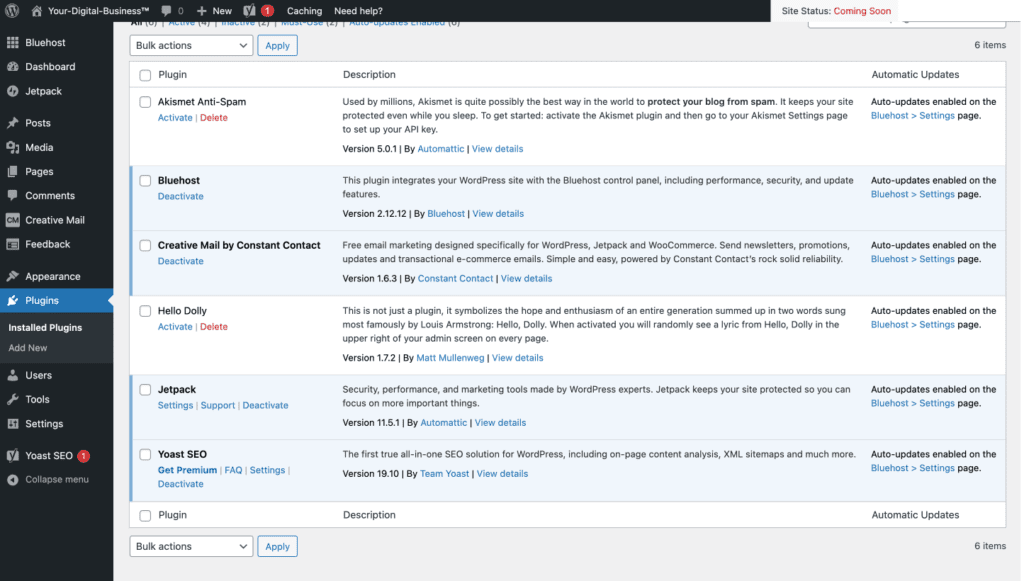
Plugins are the heart of WordPress. 
By default, every WordPress blog site loads with Constant Contact, JetPack, and Yoast SEO, along with Akismet Anti-Spam, and Hello Dolly.
At the time of writing, the WordPress Plugin Directory hosts 60,000+ different plugins to choose from. That's WAY too many plugins!
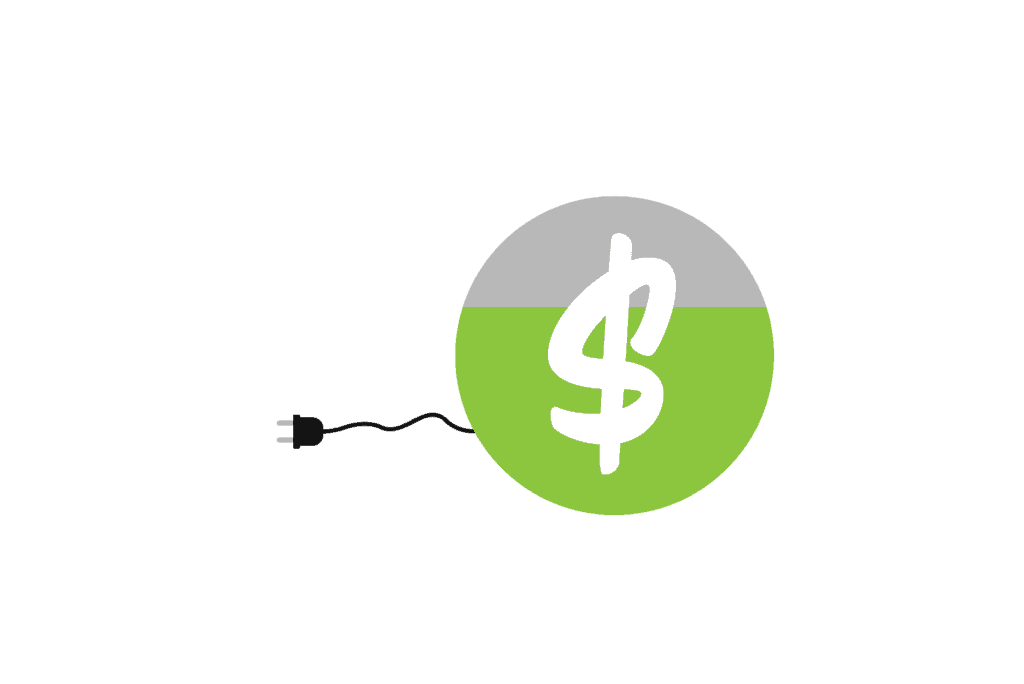
Plugins make it easier to turn your blog into a profitable business.
Plugins can be found in the WordPress repository or purchased from third-party providers and uploaded into WordPress.
They can help with various functions, such as SEO optimization, image compression, affiliate link and membership management, and e-commerce product listings.
WordPress also offers plugins that can enhance functionality and improve site design.
Like we did with themes, find and click 'Plugins' from the sidebar.
From here, you can quickly install or upload plugins with just a few clicks.
Once you have the plugin installed, you will need to activate it.
This step is important as it ensures that the plugin will work properly on your blog.
After activating a plugin, you can go into its settings and configure it according to your needs.
It's important to check out all of the plugin's features and adjust them accordingly – some require manual configuration!
A shortlist of must-have WordPress plugins to consider when you start blogging:
- SEO plugin
- Caching plugin
- Social media sharing plugin
- Contact form builder
- Security plugin
- Newsletter subscription plugin
These plugins will help make starting a blog easier for you, so it's worth familiarizing yourself with them.
Now that everything is set up let's build content and create exceptional reading experiences for our readers.
A few of our favorite WordPress plugins:
ShortPixel | ImageSEO | CAPTCHA 4WP |
AMP for WP | Hello Bar | IconicWP |
Really Simple SSL | Optimole | Pretty Links |
ThirstyAffiliates | Sucuri | WPassword |
Cell | RapidLoad | Cell |
7 Build Content
Once you have chosen a name for your blog, set up WordPress, and installed plugins, you will be able to create content based on relevant KEYWORDS!!! (
But first, let's go over the 4 Core Pages of very blog.
The Core 4 Pages
When designing a website, it is important to include the Core 4 Pages to give visitors the necessary information.
The Core 4 Pages are:
- Homepage
- About/Contact page
- Post page
- Archive page
Homepage
A homepage is the main page of a website. It is typically the first page visitors will see and contains links to the other pages on the site.
The homepage usually contains a welcome message or an introduction to the site, as well as a navigational bar that allows users to find the information they are looking for easily.
Sometimes, the homepage may also contain information about new products, services, or special offers. Homepages play an important role in guiding visitors through a website and can be customized to meet the needs of any business or organization.
About/Contact Page
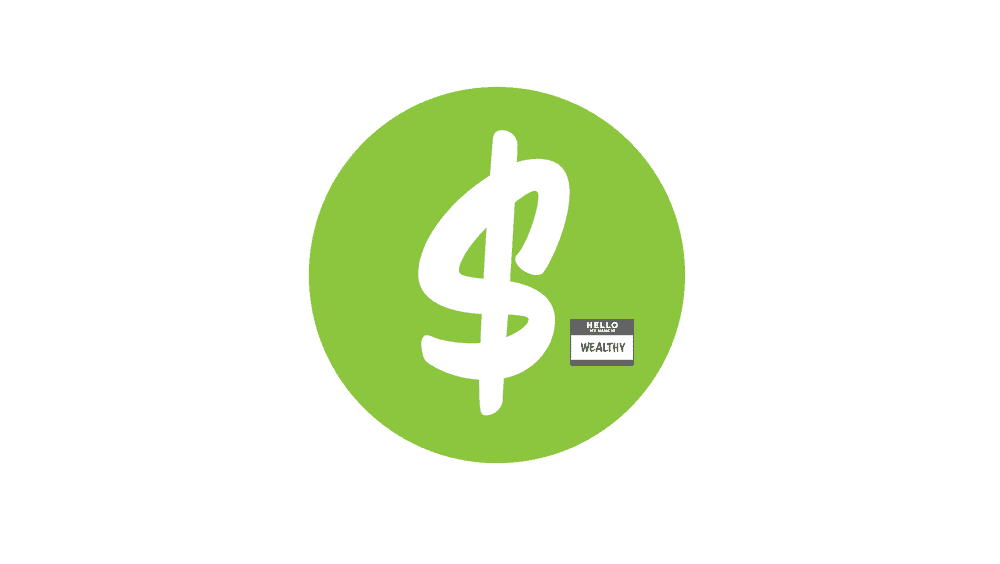
A website's About and Contact pages are two of the most important pages of any site.
The About page is your chance to tell your story. It should be engaging and informative, giving visitors a sense of who you are and what you do.
The Contact page is where you provide visitors with a way to get in touch with you. It should include your contact information, such as your email address, phone number, or social media handles.
Both pages should be clear and concise and work together to give visitors a complete picture of who you are and what you do.
Make sure that you take the time to create pages that are both informative and engaging.
Blog Post Page

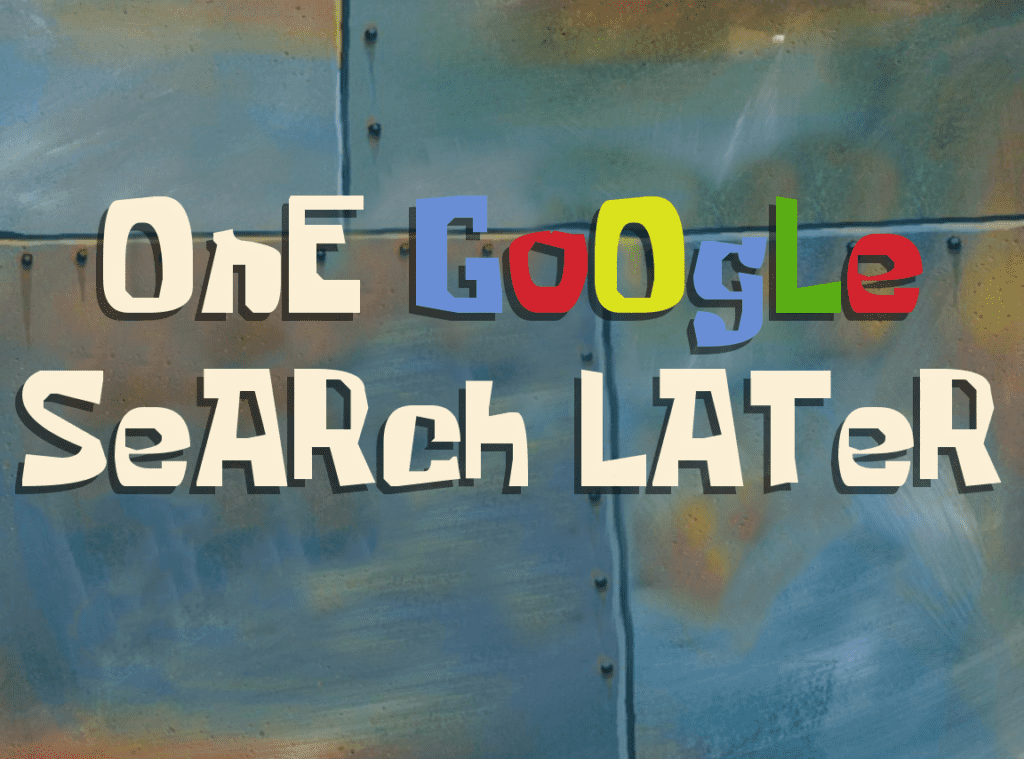
A quick google search later: [A blog post is] a regular record of someone's thoughts, opinions, or experiences put on the internet for people to read OR something such as a message or comment that someone writes on a blog
Yup... makes sense. 
A post page is a website page that contains information about a single post.
Post pages are created by bloggers, news organizations, and other content creators as a way to share their work with the World.
Post pages typically include the post's title, the author's name, the date it was published, and a post summary.
In some cases, a post page will also include comments from readers.
They are also a great way to get your work seen by a large audience and help you build relationships with your readers.
People often use new blog posts to keep track of their life, express their thoughts on current events, or share their hobbies and interests with others.
Post pages are a great way to connect with people with similar interests. By reading and commenting on each other's posts, you can make new friends and learn new things.
Archive Page
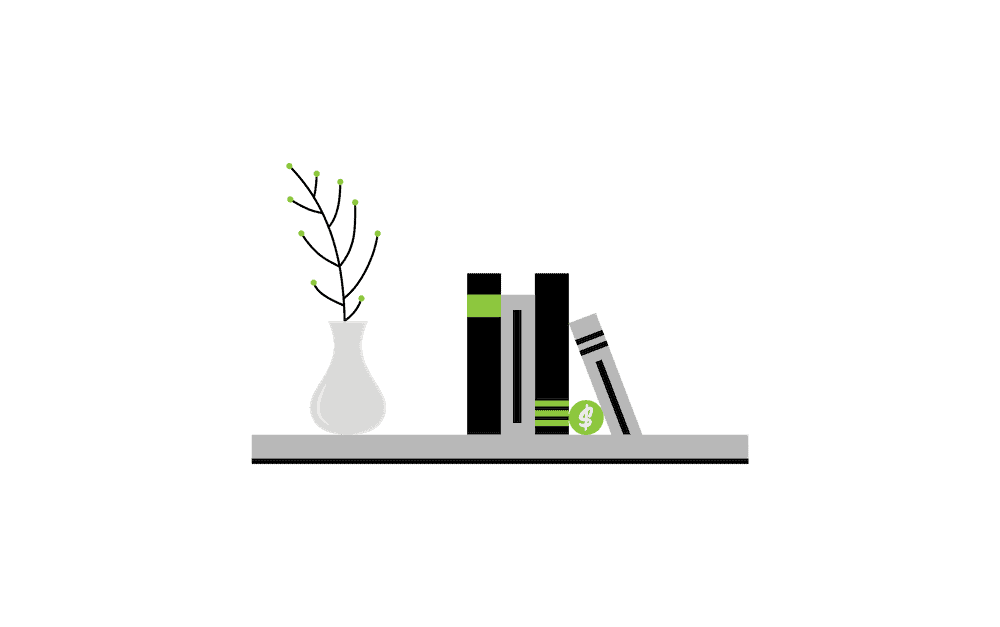
An archive page is a collection of all the posts on a blog or website, typically organized by date or category, and is a great way to help visitors find older content they may be interested in.
Archive pages are also used to group similar content, such as all the posts about a particular topic, and are typically found on blogs and news websites, but they can be used on any site.
For example, many businesses maintain an archive of press releases, financial reports, and other corporate documents.
Similarly, government agencies often archive public records and data.
An archive page is a tool for organizing and preserving information.
If you're looking for an archive page, check the footer or menu of the site to see if there's a link to it.
Your First Blog Post
Let's get to writing your first blog post. (This is where we actually start blogging... 
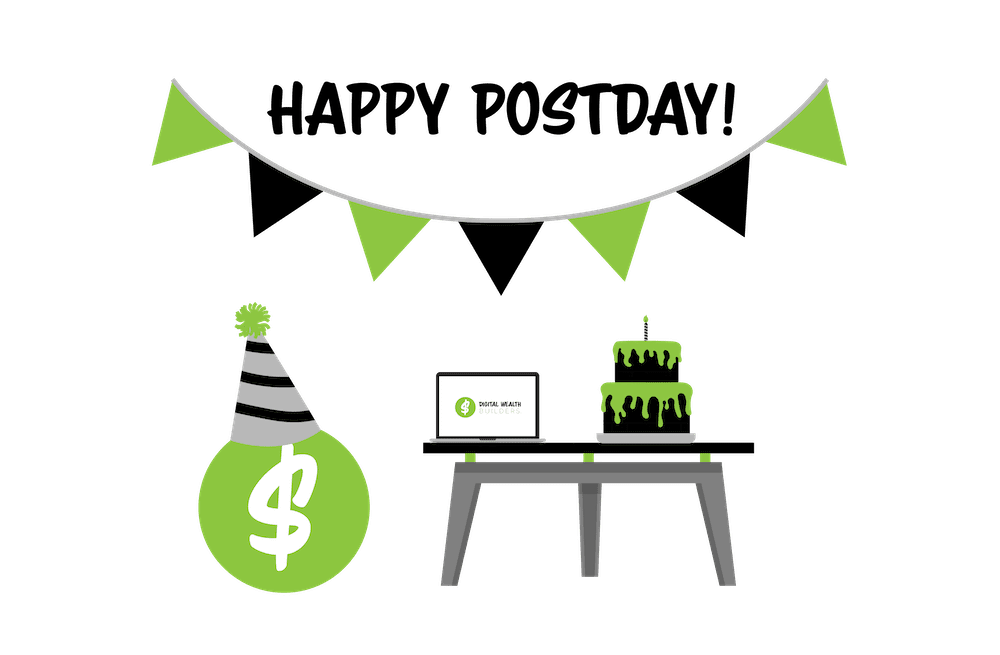
Finding Your Voice
Finding your voice as a blogger is the first step in creating content:
Some questions to ask yourself:
- How do I want to sound when expressing myself?
- What do I want to share with my audience?
- What tone will I use?
Writing posts allows you to connect with your audience and build relationships.
Be authentic to yourself, and your readers will appreciate it.
Of course, there is one caveat, the content you create needs to be exciting and engaging.
Remember: Keywords are essential when making money blogging, but incorporating them into your blogging voice can take time and effort.
With the right blend of keywords and information integrated within your posts, you'll be well on your way to success.
Post Structure
There's no one right way to structure a blog post, but a few key elements can help make your post more engaging and easy to read.
A good blog post should have the following:
- A catchy headline that accurately describes the content of the post and draws the reader in
- Short paragraphs with a clear topic sentence
- Well-written and free of grammar and spelling errors
- Contain rich content that is informative and engaging
- Strong verbs and an active voice that keeps the reader engaged
- Include a call to action, such as subscribing to the blog or following the author on social media
Taking the time to structure your post clearly and concisely will help ensure that your readers stick around until the end and that your blog post will be successful.
Informational vs. Transactional Posts
For most bloggers, the 70/30 rule will apply to how many of what types of posts you should create.
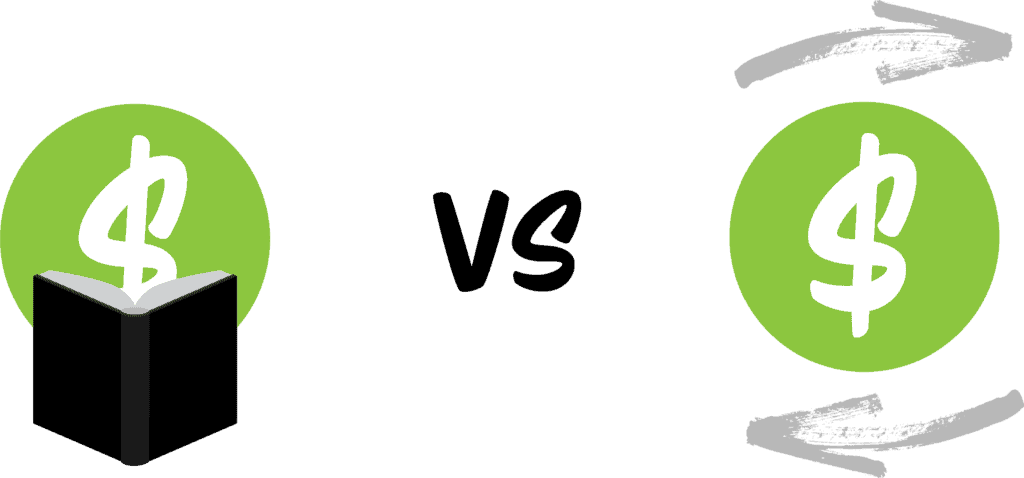
Two types of posts for new blogs:
- How to (Informational)
- Best of (Transactional)
Informational posts are designed to educate or entertain and are excellent for building brand awareness and generating interest in a product or service.
However, they can be less effective at driving direct sales.
While transactional posts, on the other hand, are designed to encourage a specific action, such as making a purchase, and are typically more successful at converting leads into customers.
Although, if blogs rely too heavily on transactional posts, they may find that their followers lose interest over time.
Each post type has its strengths and weaknesses, and the best approach for a blog will vary depending on its goals.
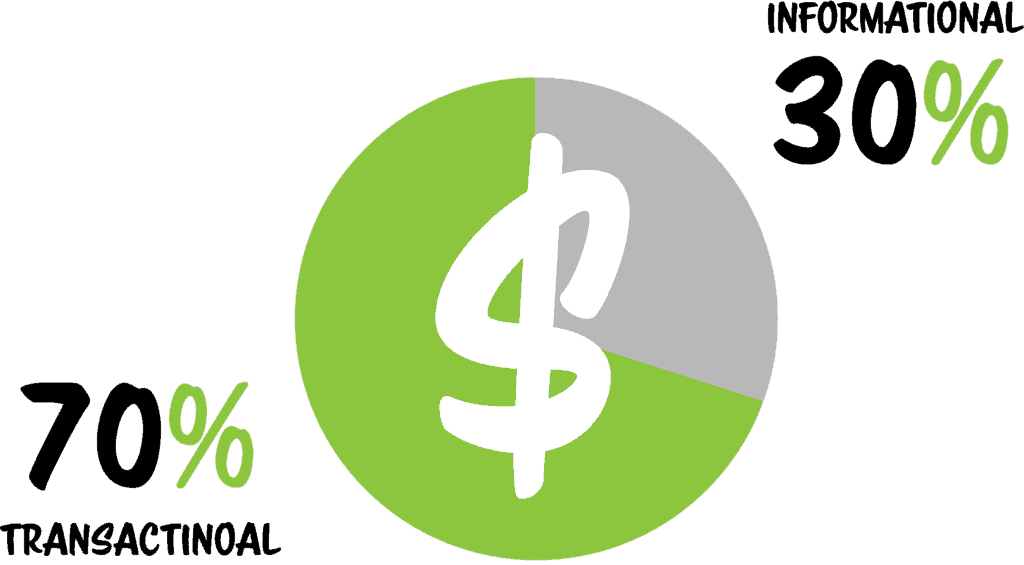
For the average blogger, around a 70/30 split (transactional to informational) is best.
The key is to strike the right balance between the two types of posts and ensure each post serves a specific purpose.
By selecting the right mix of informational and transactional posts, bloggers can ensure that their content strategy is engaging and effective.
Search Engine Optimization (SEO)
SEO is the process of improving the visibility of a website in Search Engine Results Pages (SERPs). It is important because it can help ensure that potential customers see your website.
In other words, SEO is all about ensuring that your website shows up when people search for KEYWORDS!!! relevant to your blog. (
By taking the time to implement SEO best practices, you can significantly improve your chances of success in the online World.
GoOgLe is the big boy on the block here, but not the only player in the game...
Some other search engines include:
- Bing
- Yahoo!
- Baidu
- Ask.com
- Excite
- DuckDuckGo
- Wolfram Alpha
- Yandex
- Lycos
- Chacha.com
Implementing the following techniques can boost your blog's SEO and help it appear higher in search engine results.
Some techniques you can use to maximize your SEO include:
- Keyword research
- Optimizing content for prevalent keywords
- Building links to your site
- Creating a mobile-friendly website
- Adding alt text and descriptions to photos and videos
- Creating an XML sitemap
These techniques help ensure that your website is seen by more potential customers, increase your visibility in SERPs, and make it easier for readers to find your content.
SEO can be a complex and time-consuming process, but it is often worth the effort in terms of increased website traffic and visibility.
Content Calendar

A content calendar (AKA: editorial calendar) is an essential tool for any content creator. It helps to plan and track your blog content, ensuring you hit deadlines and stay on topic.
Content calendars can be as straightforward or as complex as you need them.
At a minimum, they should include the topics you plan to cover and the dates you plan to publish.
However, you may also want to include other information, such as:
- The target audience for each piece of content
- The format (e.g., new blog post, video, infographic)
- The keywords you want to target
Content calendars can be created in various ways, including using a spreadsheet or dedicated software.
No matter how you create yours, make sure it is easily accessible and easy to use.
Having a well-organized editorial calendar will help you save time, keep your content strategy on track, and increase your chances of creating a profitable blog.
Publishing Velocity

Publishing velocity is a measure of how frequently you publish content.
The average publishing velocity for successful bloggers is 2-4 articles per week.
If you're starting, that might seem like a lot, but it's easy to maintain if you prioritize.
The best way to increase your velocity is to set aside time each week to brainstorm blog post ideas, do keyword research, and write your blog posts.
Once you get into a rhythm, you'll find that it's not as daunting as it seems.
And the more content you publish, the more likely you are to attract readers and build an audience.
If you're serious about blogging and want to make money, commit to increasing your publishing velocity.
Remember to proofread your post before you hit publish!
8 Promote Your Blog
Once you've created some great blog content, it's time to start promoting your new blog.
This is how your blog gains traction.
Share your first blog post on social media, send out email newsletters, and reach out to influencers in your niche.
The more people who see your content, the better!
Link-Building
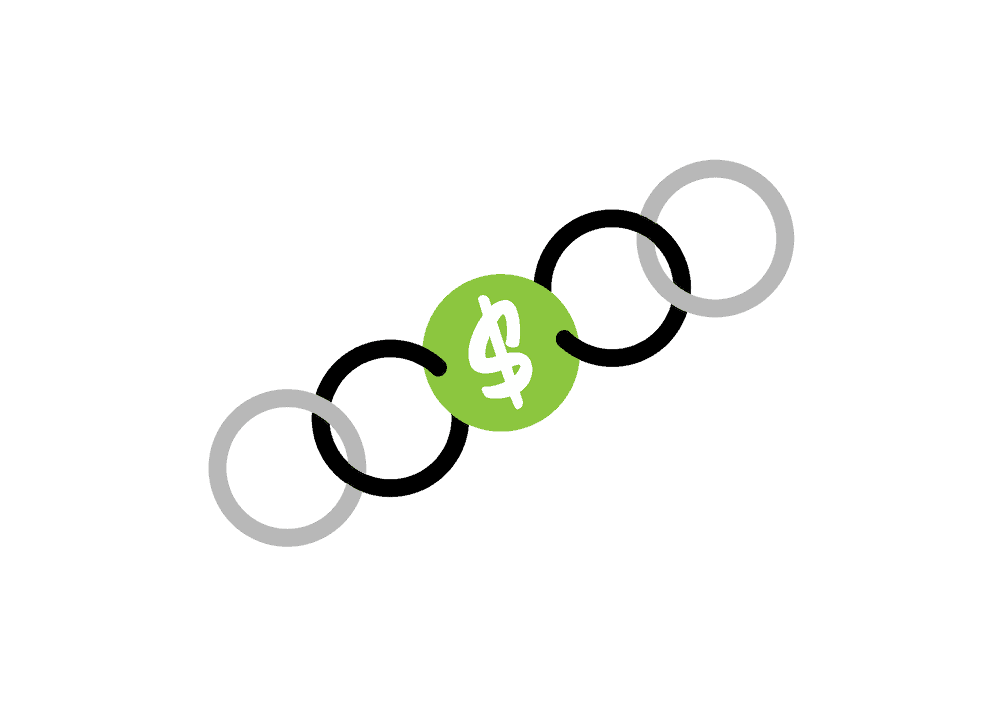
Link-building is the process of creating links from other websites to your own and helps to improve your website's search engine rankings, which can also lead to more direct traffic.
If you want to increase traffic to your own blog, link-building is an essential strategy.
Building links takes time and effort, but it's well worth it if you want to increase traffic to your blog.
You can also link to other blogs or websites in your own posts as long as they're relevant and high-quality.
By using a variety of link-building strategies, you can ensure that your blog gets seen by more people.
Ways to build links to your blog:
- Guest posting
- Directory listings
- Social media.
Guest Posting
One popular link-building strategy is guest posting. This involves writing articles for blogs in your industry in exchange for a link back to your own site.
Reach out to bloggers in your niche and see if they're interested in guest posting for your site.
This is a great way to get high-quality content and build links simultaneously.
Guest posting can be a great way to promote your blog online, get exposure to your blog, and build relationships with other businesses and blog owners.
However, ensuring that you're only guest posting on quality sites relevant to your niche is crucial.
Otherwise, you could end up doing more harm than good.
Directory Listings
Another link-building option is submitting your blog to directories and link roundups, which can help increase your visibility and boost your link-building efforts.
This can be a quick and easy way to get high-quality links from authority sites.
However, choosing the proper directories and submitting your site carefully is vital to avoid being penalized by Google.
Social Media
Link-building is about more than just getting other people to link to your site. You can also use social media and Facebook groups to build links.
For example, you can share your blog posts on Twitter and LinkedIn or post them in relevant Facebook groups.
Ensure that you're only sharing quality content that interests your target audience.
Otherwise, you could be ignored or even banned from some groups.
Relationship Building
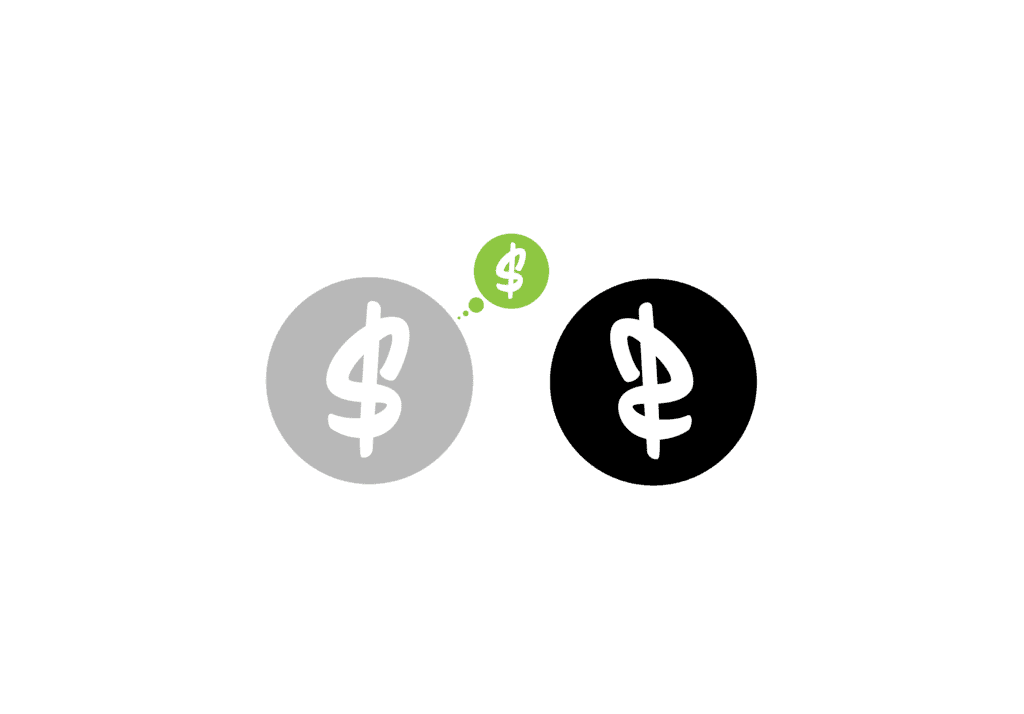
Building relationships is key to your success in creating a profitable blog.
You need to build relationships with other bloggers in your niche, with brands, and with your readers.
These relationships will help you grow your blog and make it more successful.
To build relationships with other blogs, start by commenting on specific blog posts on their own blogs and engaging with them on social media.
Share their content and give them shout-outs when you can.
You can also collaborate with other bloggers on projects or guest post on each other's blogs.
Building relationships with other bloggers will help you create a supportive community and network of peers.
Building relationships with brands is also essential for bloggers!
You can reach out to brands that you love and ask to collaborate on a project, review their products, or create a blog post title with their brand name in it.
Most brands are happy to work with bloggers because it's a great way to get exposure to their products.
If you have a good relationship with a brand, they may also be willing to sponsor your blog or give you discounts to share with your readers.
Finally, don't forget about your relationships with your readers!
Regularly interact with them in the comments section of your blog and on social media.
Respond to their questions and concerns, and get to know them individually.
The better you know your readers, the better you'll be at giving them the content they want, which will keep them coming back for more.
How to Build a Blog Summary.
Phew...
Not gonna lie... for a second there, I didn't know if we...
It was just... my brain... kinda started... doing this thing...
We definitely should've drunk someth... Where's my water?!
Ahh, just messin'... I knew we could do it the whole time!
But I know you were thinkin' it...
Yeah! You had that look on your face... I seent it!
Congratulations on making it through!
To recap, the steps on How-to-Build-a-Blog are:
There you have it—8 easy steps to starting your very first blog!
I promise that if you take it one step at a time before you know it, you'll be a pro.
And once you get started, the sky's the limit—the possibilities for where your blog can take you are endless.
Now, it's time to put in some good old-fashioned elbow grease to start your new WordPress blog and begin your blogging journey - if you haven't already!
Start a blog with Bluehost for as low as $2.95/month.
That's 70% OFF the regular rate for the first 12 months!
Finally, remember that blogging takes time and effort to succeed.
By following this guide, you're well on your way to starting a successful money-making blog.
Remember: We're here to help you Succeed
Wealthy's-Favorite blogging tools are Bluehost, PartnerStack, ShortPixel, Sucuri, & Surfer SEO.
How to Build a Blog FAQs
What is a Blog?
A blog is a regularly updated website or set of web pages, typically run by an individual, small group, or company, written in an informal or conversational style.
Blogs are becoming increasingly popular as a way to share information with the World. They can be used by an individual, small business, or large corporation, and their content often has an informal tone, making them a fantastic way to share knowledge on any number of topics.
Why Should You Start a Blog?
Blogging is an excellent way to build an audience and make money from your hard work. A blog can also help build credibility for your business or brand by adding content that helps potential customers get to know you better.
How Do I Successfully Start a Blog?
A successful blog doesn't just happen overnight. It takes a lot of hard work, dedication, and passion. Most blogs fail, but if you're willing to put in the effort, starting a successful blog can be a gratifying experience. Here are a few tips to help you get started on the right foot:
1. Find your niche. What are you passionate about? What can you write about with authority? When you find your niche, your blog will have a better chance of resonating with readers.
2. Promote, promote, promote. Getting the word out about your blog is essential for its success. Use social media, email marketing, and search engine optimization to get the word out. The more people who know about your blog, the more successful it will be.
3. Keep it fresh! To keep readers coming back, you must regularly update your blog with fresh content. This doesn't mean that you need to post new articles every day - but you should aim to post new content regularly.
4. Engage with your readers. Respond to comments and emails, and interact with other bloggers in your niche. The more engaged you are with your readers, the more successful your blog will be.
By following these tips, you'll be well on your way to starting a successful blog that will continue to grow for years to come.
What is WordPress?
WordPress is a Content Management System (CMS) that allows users to create and manage a website or blog. WordPress is free and open-source software released under the GPL. WordPress is used by millions of people around the World, including many large organizations, such as The Guardian, Forbes, and The New York Times. WordPress is easy to use and flexible, making it a popular choice for both beginners and experienced users. WordPress can be installed on a web server or hosted by a provider such as WordPress.com.
Who/What is a Blogger?
A blogger is an individual who writes and maintains a blog. Bloggers may write about personal experiences, current events, or other topics. Some bloggers use their platforms to generate income through advertising or sponsored content. Others enjoy sharing their thoughts and experiences with the World. Whatever their motivations, bloggers play an essential role in the online community. By sharing information and sparking conversations, they help to connect people from all corners of the globe.
Should I Use WordPress.com or WordPress.org?
If you're like most people, you've probably heard of WordPress. There are two different versions of WordPress: WordPress.com and WordPress.org. So, which one should you use?
The answer depends on your needs. If you're looking for a simple, hassle-free way to create a website or blog, then WordPress.com is a good choice. You can create a website in minutes, and there's no need to worry about web hosting, security, or updates.
However, if you need more control over your website or want to add custom features, then WordPress.org is the better option. With this version of WordPress, you'll need to find your hosting provider and handle updates yourself (or pay someone to do it for you), but you'll have access to a vast array of plugins and themes.
So, which version of WordPress is right for you? If you're not sure, why not try both? WordPress.com offers a free plan that gives you access to all the basic features, while WordPress.org has a wide variety of free and premium themes and plugins available. Whichever route you choose, you can't go wrong with WordPress.
Does It Cost Money to Start a Blog?
It CAN cost money to start a blog. You might have to pay for hosting (a monthly or yearly fee), buy a domain name (an annual fee), and invest in premium themes or plugins (which are generally one-time fees).
How Much Does It Cost to Start a Blog?
The answer depends on your budget and your blogging goals. You can get by with a basic hosting plan and a free theme if you're starting.
However, if you're serious about blogging and want to grow your audience, you'll need to invest more money upfront. The cost of building a blog can vary greatly depending on the platform you choose and any additional features you may need.
Typically, hosting and domain registration range anywhere from $5-20 per month.
If you build your blog with WordPress, FREE themes are available to eliminate some of the startup expenses.
The only other cost you might incur is if you hire someone to help you design or develop your blog. But other than that, it's really up to you how much you want to spend on your new venture. So if you're thinking about starting a blog, don't let cost be a barrier - it's more affordable than you might think!
Can You Start a Blog for FREE?
If you're thinking about starting a blog, one of the first questions is whether you can do it for FREE. The good news is that, YES, you can start a blog for FREE.
There are different ways to go about it, and several other platforms will allow you to do so. The most popular way to start a free blog is with WordPress.com. WordPress.com is a FREE platform that allows you to create a blog and host it on their servers. You'll have access to many different themes and plugins, and you'll be able to customize your blog to a certain extent.
However, you won't have complete control over your blog and won't be able to use your domain name. If you're looking for more control over your blog, you can opt for a self-hosted WordPress.org site. This option will require you to pay for hosting, but it will give you complete control over your blog and allow you to use your domain name.
There are also some other free blogging platforms that you can use, such as Blogger and Tumblr. Each platform has pros and cons, so it's worth exploring each before deciding which is suitable for you. Starting a free blog is possible, whichever route you choose - all it takes is a little research and some time and effort.
How Do You Start a Blog for FREE?
The first step to starting a blog for free is to create an account on WordPress.com or download the software from WordPress.org. Once you have an account, you can choose a theme, customize it, and begin building content.
How Do I Get Readers to My Blog?
There's no point in having a blog if no one reads it. So how do you get readers to your blog? The answer may seem obvious - by writing great content that people want to read. But there's a bit more to it than that. You also must ensure that your blog is easy to find and that you're actively promoting your content. Here are a few tips to help you get readers to your blog:
- Use social media: Platforms like Twitter and Facebook are great for sharing your blog content with a broad audience. Ensure you post links to your latest articles and use hashtags and other techniques to attract readers.
- Leverage your existing network: If you have an extensive email list or social media following, use it to promote your blog. Send regular updates with links to your latest articles, and encourage people to share your content with their networks.
- Get involved in the blogging community: There are thousands of bloggers out there, and becoming engaged in the community can help you attract readers to your site. Comment on other blogs, participate in discussion forums, and guest post on popular sites. By getting involved, you'll not only attract new readers, but you'll also build up valuable relationships with other bloggers.
Can I Build a Blog in My Native Language?
Of course! One of the best things about WordPress is that it can be used in any language. So if you're looking to build a WordPress blog in your language, it's possible!
Many plugins allow blog owners to translate their blogs into multiple languages.
There are a few different ways to translate WordPress into your native language. One option is to use a translation plugin such as TranslatePress or Weglot, which will automatically translate your site into the desired language.
Another option is to manually translate the WordPress core files, which can be a bit more time-consuming but will ultimately give you more control over the translated content. Whichever method you choose, building a WordPress blog in your language is possible and can be a great way to reach a wider audience.
Do Bloggers Get Paid?
Yes. But it can be challenging to make money from blogging. Most bloggers never make any significant amount of money from their blogs. This is because they need a solid plan or strategy for generating revenue.
How Do Bloggers Get Paid?
Bloggers make money through different methods. Successful bloggers can earn up to a seven-figure income – some will generate just a few thousand. Many bloggers say they need $2,000 a year in revenue, recurring.
Bloggers can sell advertising space on their blogs or participate in affiliate marketing programs. These programs pay bloggers commissions for every sale they generate.
Another way to make money from blogging is to sell products or services through a blog. For example, a blogger could sell e-books, online courses, or other digital products.
Some blogs can generate enough traffic to charge subscription fees. This is usually only possible for well-established blogs with a large audience.
While most bloggers don't get paid for their work, there are more than a few ways to generate income from their blogs.
How Do I Start a Food Blog?
Before starting a blog about food, you should keep a few things in mind. First, decide what kind of food blog you want to create. Are you going to be sharing recipes, writing about food news, or something else entirely?
Once you know the focus of your blog, come up with a catchy name and launch your site. Then, start creating content. If you're sharing recipes, be sure to take quality pictures and include clear instructions. Whatever content you create, ensure it is engaging and informative.
Finally, promote your food blog on social media and other channels. With a little effort, you can build a successful food blog that will attract readers from all over the World.
How Do I Start a Travel Blog?
A travel blog can inspire others to travel and explore new places while also documenting your adventures. If you want to start a blog about traveling, there are a few things you should keep in mind.
First, choose a catchy name and domain for your blog. Next, design an attractive and user-friendly platform. Be sure to include plenty of photos and helpful information about the destinations you're writing about.
Finally, commit to regularly updating your blog with new content. With a little hard work and dedication, you can soon build a successful travel blog that others will love to follow.
How Do I Start a Fashion Blog?
Fashion blogging is a great way to share your style with the World.
If you want to start a personal blog in the fashion niche, your first need to choose a platform. WordPress and Tumblr are two popular options, but there are many others to choose from. Once you've decided on a platform, it's time to choose a domain name and design your site. Keep it simple at first - you can always add more complicated features later.
Next, start creating content; fashion blogs typically include photos of outfits, hauls, and lookbooks, but don't feel limited to those topics. You can also write posts about fashion news, trends, and tips. Whatever you write about, make sure it's original and engaging.
Lastly, promote your blog. Share your posts on social media, reach out to other fashion bloggers, and comment on other blogs to get your name out there. With a little effort, you'll be well on your way to fashion blogging success!
How Do I Start a Beauty Blog?
These days, it seems like everyone is a beauty blogger. From fashionistas to beauty fanatics, many people are eager to share their latest beauty finds with the World. But if you want to start a blog in the beauty niche, you may need help figuring out where to begin.
Are you passionate about skincare? Makeup? Hair? Narrowing your focus will help you stand out in the beauty blogging world. Once you've chosen your niche, it's time to start creating content.
Beauty blogs typically include both written posts and photos or videos, so you'll need to be comfortable creating both types of content. And remember to promote your blog! Share your posts on social media and reach out to other bloggers in your niche to get the word out about your new beauty blog.
Can I Sell Amazon Products on My Blog?
If you have a WordPress blog, you may wonder if you can sell Amazon products. The short answer is yes, you can! However, there are a few things to keep in mind before you start selling.
First, you'll need to sign up for an Amazon Associates account. This will give you a unique link that you can use to direct your readers to Amazon. When someone purchases through your link, you'll earn a commission on the sale.
Second, ensure that your promoting products are relevant to your blog's content. Your readers are more likely to buy something if they feel it's a natural extension of what they're already reading about.
Finally, don't spam your readers with too many ads or product links. A few well-placed links will do the trick; bombarding your readers with too many products will turn them off.
What Amazon Products Should I Sell on My Blog?
Amazon is a massive marketplace with a vast selection of products. So, how do you choose what to sell on your blog? First, consider your niche and what products would be a good fit.
For example, if you have a beauty blog, you might sell makeup or skincare products. Then, consider the products selling well on Amazon and which ones you could promote on your blog. Make sure to choose products you're passionate about and believe in, as this will help you sell them more effectively.
Finally, remember to consider the competition. If there are already a lot of blogs selling the same products, you'll need to work hard to stand out from the crowd. But if you choose the right products and market them well, you can successfully sell Amazon Products on your blog.
Can I Put Google Adsense on My Blog?
Yes, but we don't recommend it to new bloggers.
Google Adsense is a program that allows website owners to place ads on their sites and earn money when visitors click on the ads. The ads are targeted to the site's content, so they are more likely to be clicked on by visitors interested in the topic. It's a popular way to monetize a website, and many bloggers use it to generate revenue.
First, make sure that your blog is high-quality and provides valuable information to readers. Google Adsense will not approve sites that contain plagiarized content or are deemed low-quality.
Second, make sure that your blog has enough traffic to generate clicks on the ads. If your blog is new or gets little traffic, it may be challenging to earn money with Adsense.
Before you can put ads on your blog, you need to sign up for a Google Analytics account and link your site to your Google account through the Google Search Console. Once your site is linked in Google Search Console, you can start placing ads on your blog and earning money. Google Adsense is a great way to monetize your blog and earn extra income.
You can also sell ad space on your blog by joining an advertising network such as Ezoic
How Much Can I Make if I Put Ads on My Blog?
The amount of money you can make from ads on your blog depends on various factors, including the size of your audience and the ads you choose to run.
Generally speaking, ad revenue is based on two things:
- the number of people who see the ads
- the amount that advertisers are willing to pay per impression
For example, if you have a small blog with 1000 readers and run ads that pay $0.10 per impression, you would make $100 in ad revenue each month.
However, if you have a large blog with 100,000 readers and run ads that pay $0.50 per impression, you would make $50,000 in ad revenue each month.
As you can see, the potential earnings from ads can vary greatly depending on your situation. If you're interested in running ads on your blog, research to determine how much revenue you can realistically expect to generate.
How Often Should I Back-Up My Blog?
For most people, especially those who are just starting a blog, the answer to how often you should back up your blog is: as often as possible. That might sound like overkill, but it's not. The more frequently you back up your blog, the less likely you lose any data. And, if you lose data, the less likely you'll lose a significant amount.
How you back up your blog will depend on how you've set things up with your web hosting provider. Your data is automatically backed up if you use a hosted platform like WordPress.com. But if you have a self-hosted WordPress site, you're responsible for backing up your data. There are a few different ways to do this, but we recommend using a solution like BackupBuddy. That way, even if your server crashes, you'll still have a copy of your data safely stored elsewhere.
The bottom line is that you should back up your blog as often as possible. We know it's not the most exciting task in the World, but it's essential to do it nonetheless. So please set up a regular backup schedule and stick to it!




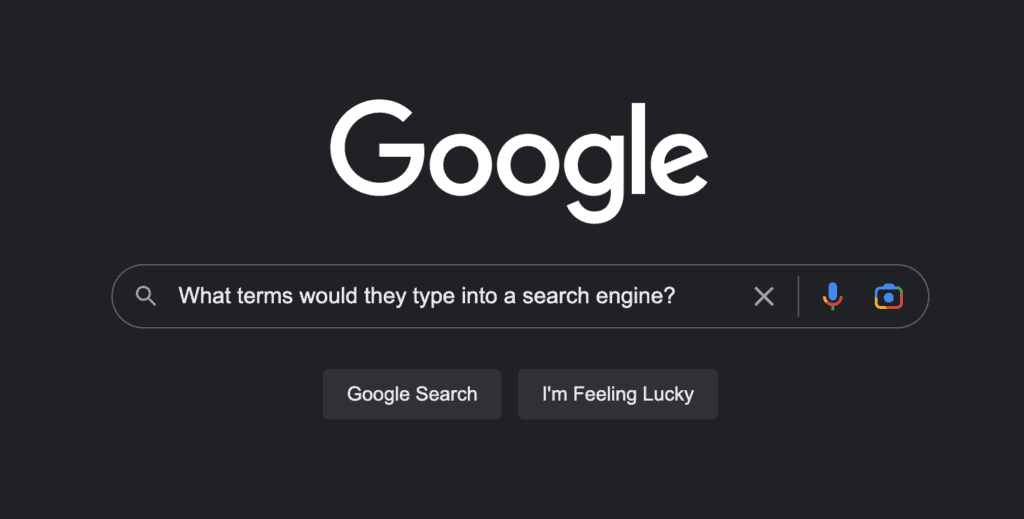
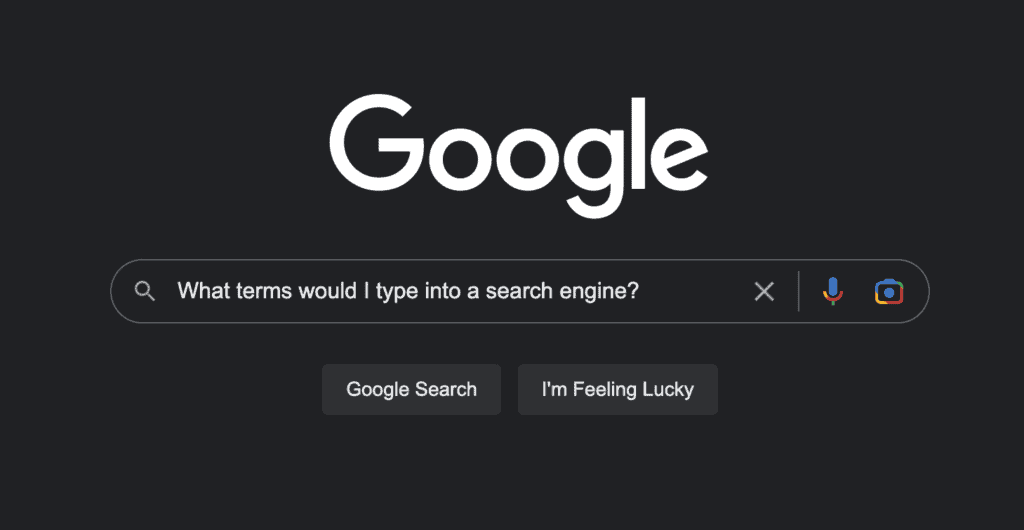

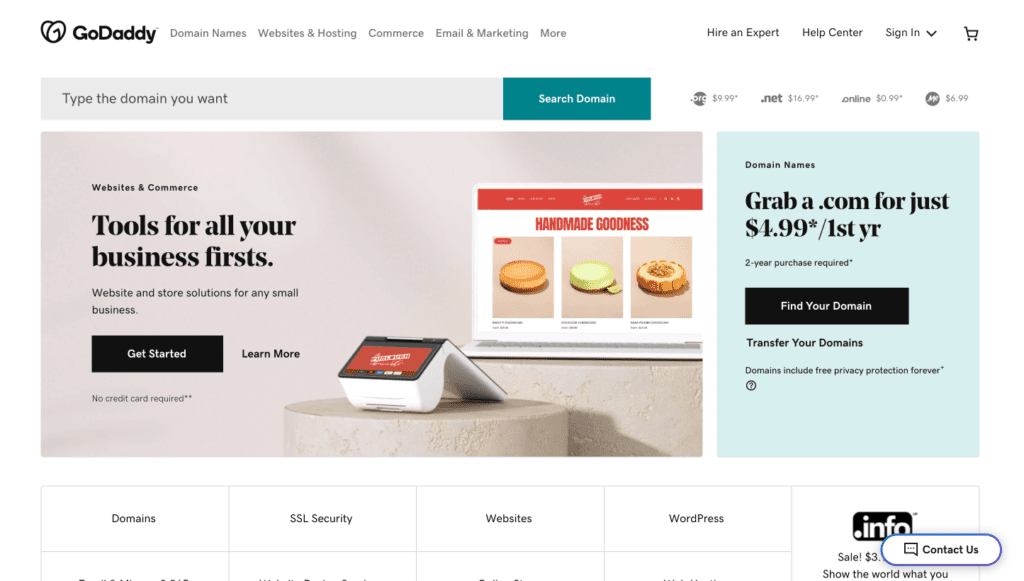
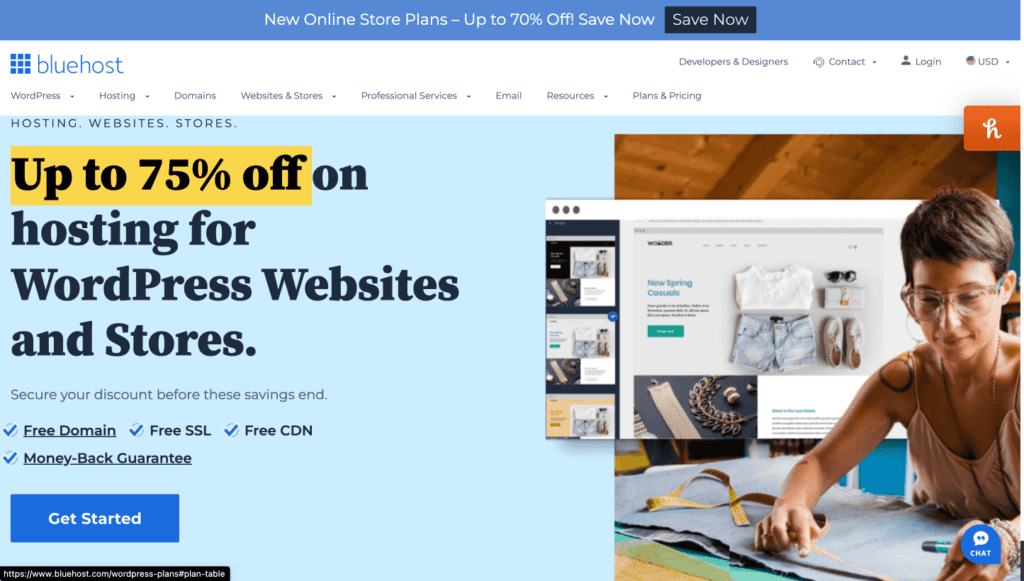

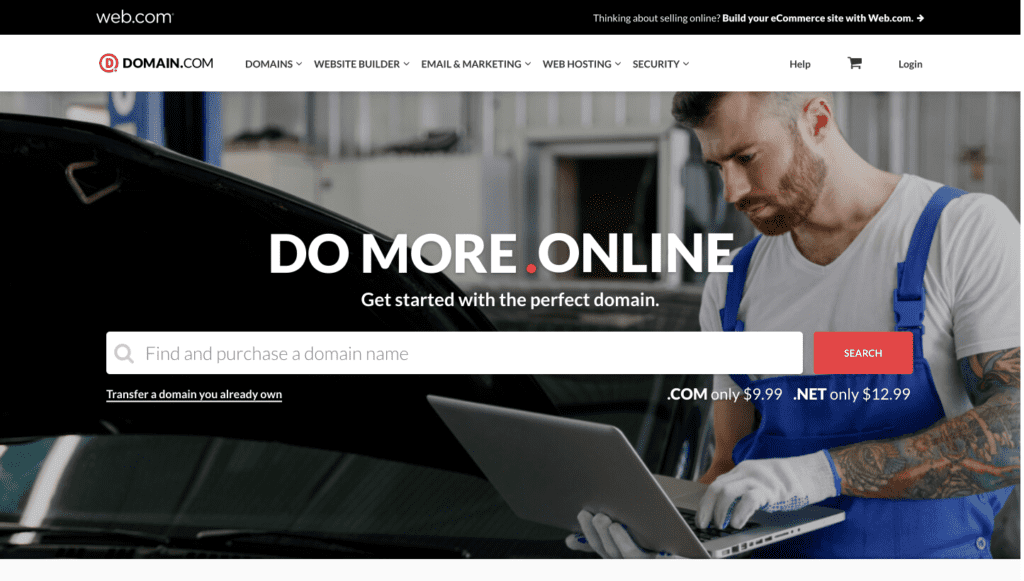
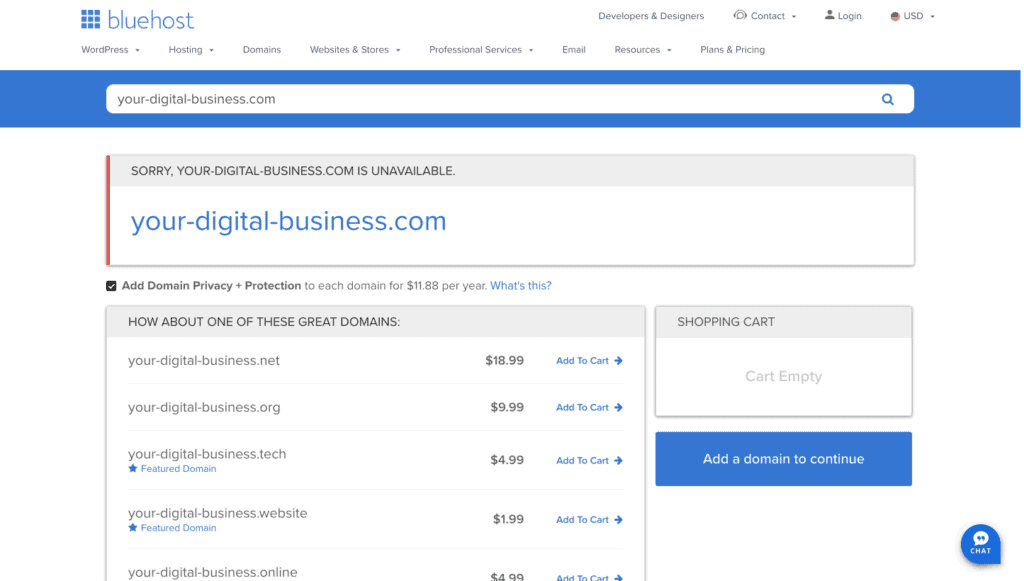

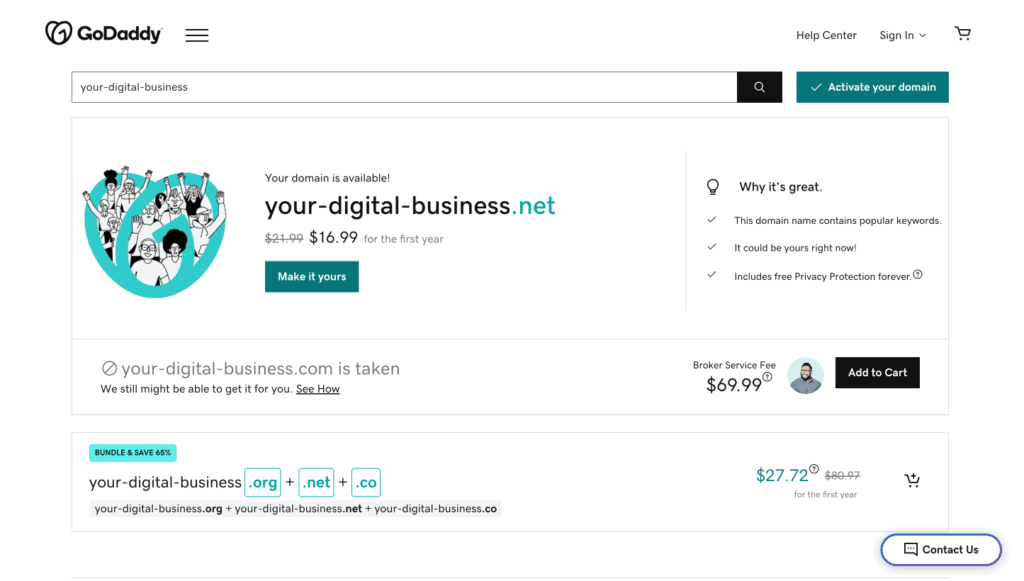


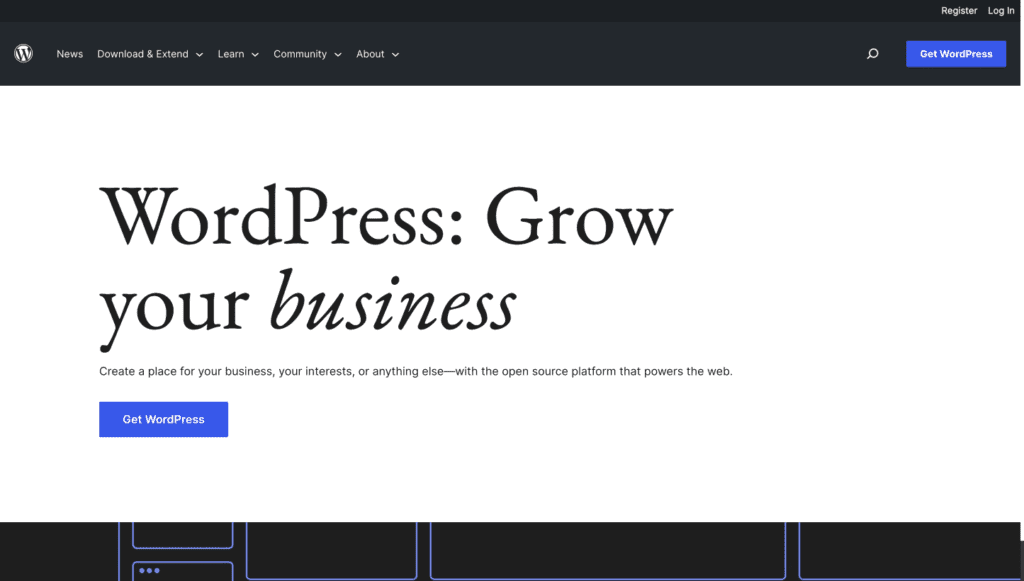
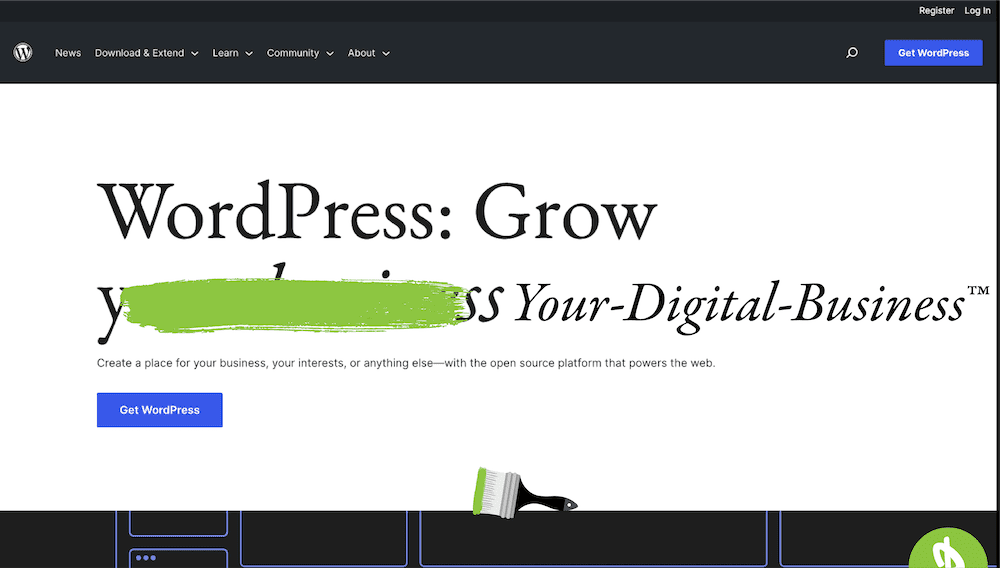



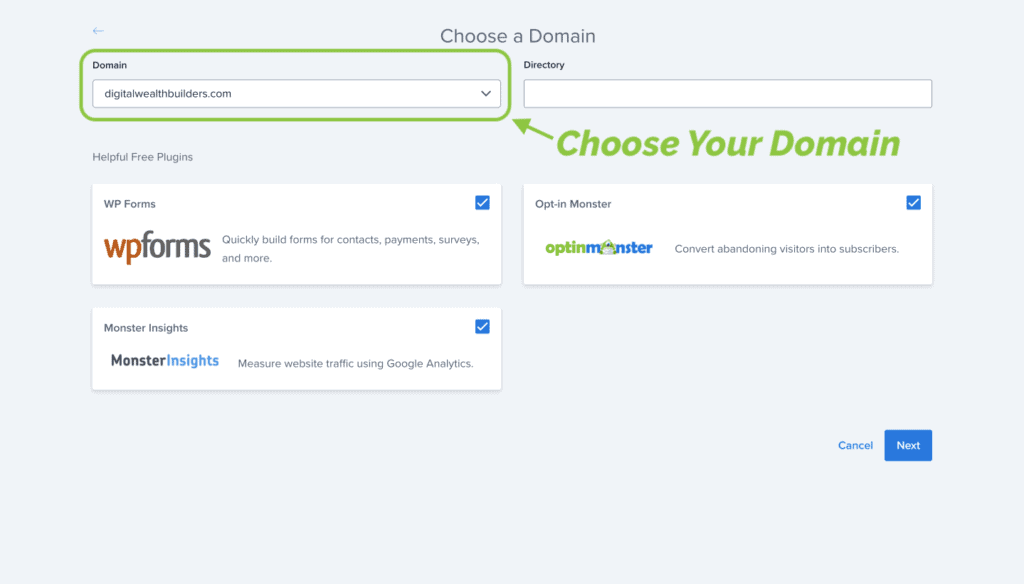

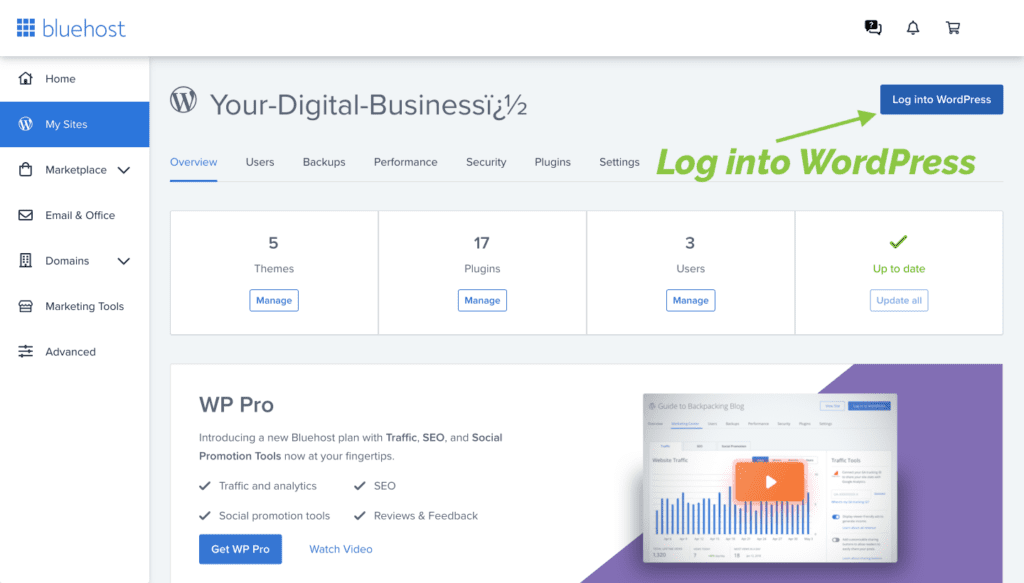























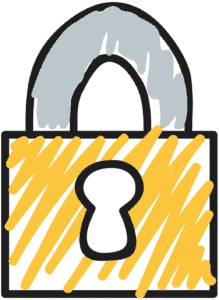


 "
"